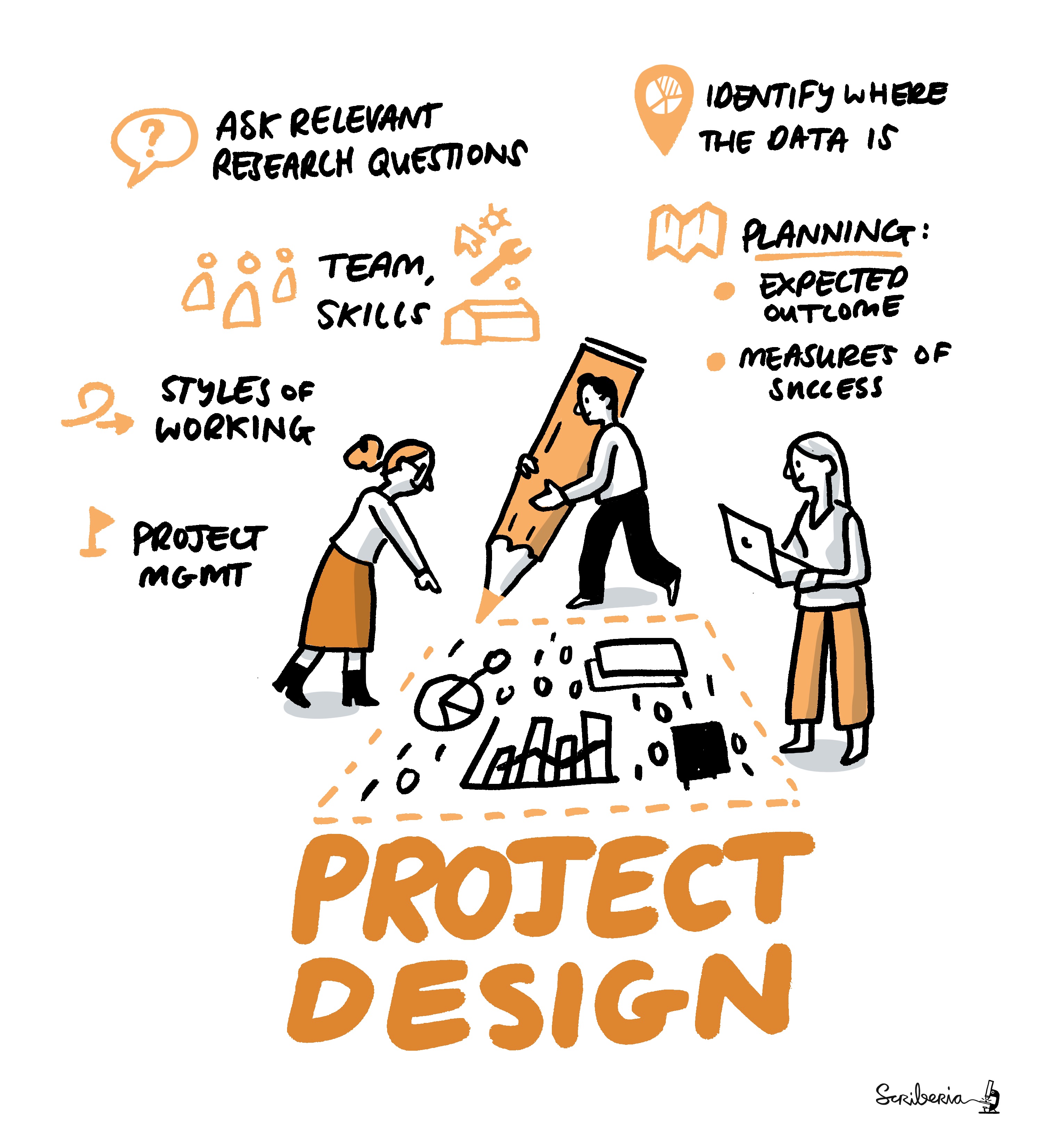Guide for Project Design¶
This guide covers topics related to effective project planning and management.
Before starting a project data scientists needs to understand what their research questions are, what are the possible outcomes, who are their users and target audience, what resources are available and what possible constraints exist in the project. Project design starts with these crucial questions. Then comes the planning. The scoping of the project in terms of ethics and usability of their outcome, expected minimum viable product of this project, synergies with other projects, similarities or differences compared to other projects, a measure of success, and the overall impact of this project. Project design also includes aspects such as time, budget, risks, expectations, people, resources and timeline management, and preregistration of statistical protocols.
|
|---|
The Turing Way project illustration by Scriberia. Zenodo. http://doi.org/10.5281/zenodo.3332807 |
In this guide, we compile best practices and guidance on project designing by including different aspects of project management and agile development practices derived from academia, industries and product development fields. We hope you will learn from different case studies for small, mid-size, and large projects spanning to both short-term and long-term plans. If you are brave enough, your examples of failed projects will be incredibly valuable for understanding how to avoid making the same (totally understandable!) mistakes again.
When designing a team-based project, it is important to think about all the skills required in the project and resources needed to access those skills. With this in mind, we welcome chapters defining the requirements in a project in terms of up-skilling, supporting and improving accessibility of different stakeholders. Check out our contributing guidelines to get involved.

